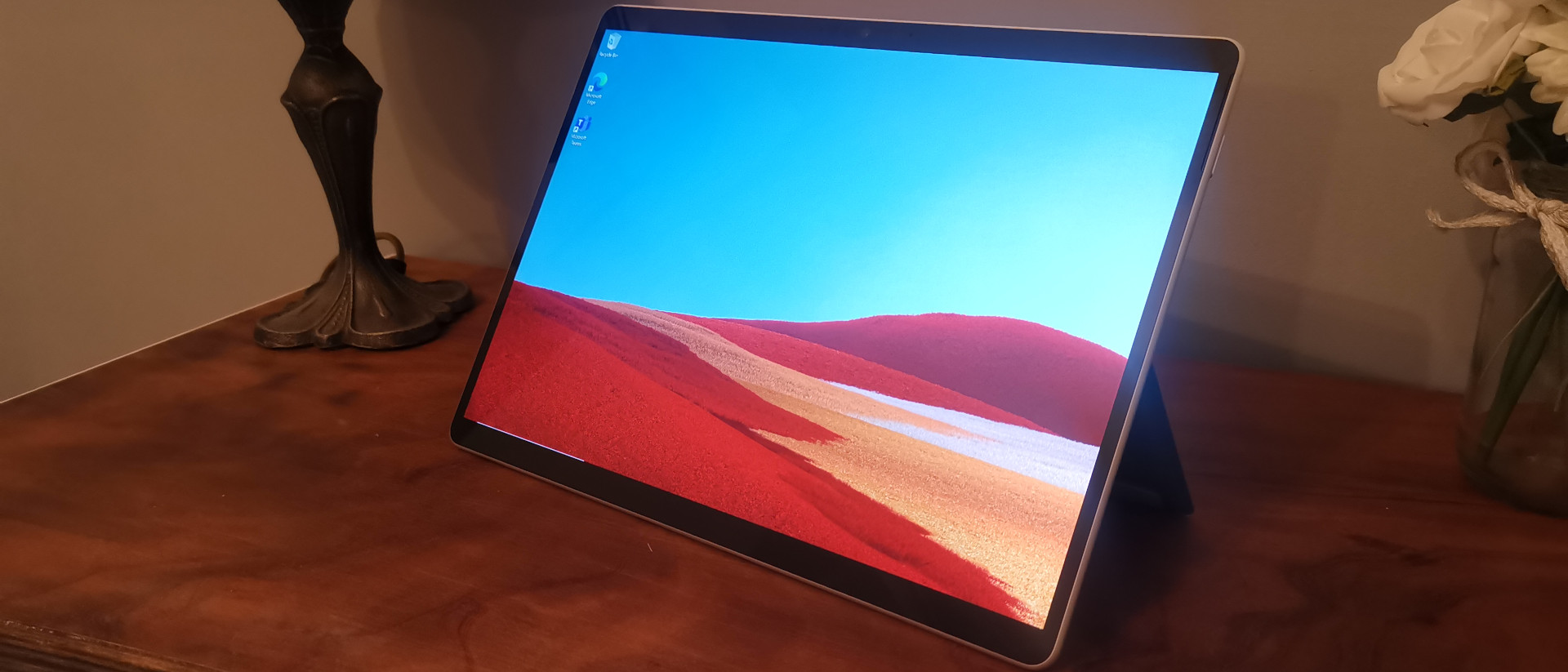Our Verdict
The Microsoft Surface Pro X is a lightweight device for everyday browsing and general office work, but the lack of native support for creative applications for Windows on ARM makes it a very hard sell for people working in a creative industry. It makes for a sufficient secondary tool if you already have dedicated hardware to run the software you need, but even then it's outshined by older, Intel-powered Surface Pro devices.
For
- Beautiful 13-inch display
- Lightweight and ultra-portable
- Fantastic cameras for a tablet
Against
- Lack of app support for Windows on ARM
- No Thunderbolt 3 or Thunderbolt 4
- Stylus and keyboard come sold separately
Why you can trust Creative Bloq
The Surface Pro X is a hybrid style tablet device from Microsoft, much like its Surface Laptop Studio, created to appeal to consumers looking for all the benefits of an ultra-portable laptop, but with the battery life of a smartphone. This is thanks to Microsoft ditching Intel and instead, moving over to its own ARM-based chip, created in partnership with chipmaker Qualcomm (who typically create chips for mobile devices), but the resulting product fails to live up to the hype of what an ARM-based Windows device could really offer.
Let us explain. There are some great advantages in regards to devices being based on ARM rather than the x86 chip architecture that has been around for decades, such as the aforementioned increase to battery life, built-in 4G (or even 5G), and the ability to achieve an ultra-slim chassis, but this all comes at the cost of software compatibility.
Size: 287 mm x 208 mm x 7.3 mm
Weight: 774g (1.7 lb)
Processor: Microsoft SQ1 or SQ2 ARM chip
Resolution: 2880 x 1920
Screen: 13-inch PixelSense™ Display
Storage: Up to 512GB SSD (PCIe, NVMe, M.2)
Battery: Up to 9 hours 10 minutes
Where other Surface Pro devices (such as the Surface Pro 6) were based on Intel, allowing them to run any application that the specifications of the device could handle, creatives might feel restricted with the Surface Pro X and its much shorter list of supported software. For example, Photoshop and Lightroom are the only current Adobe Suite applications that can run natively on an ARM-based device, so if you use multiple Adobe programs to complete a project you’ll find the hardware to be extremely restrictive.
Surface Pro X: price
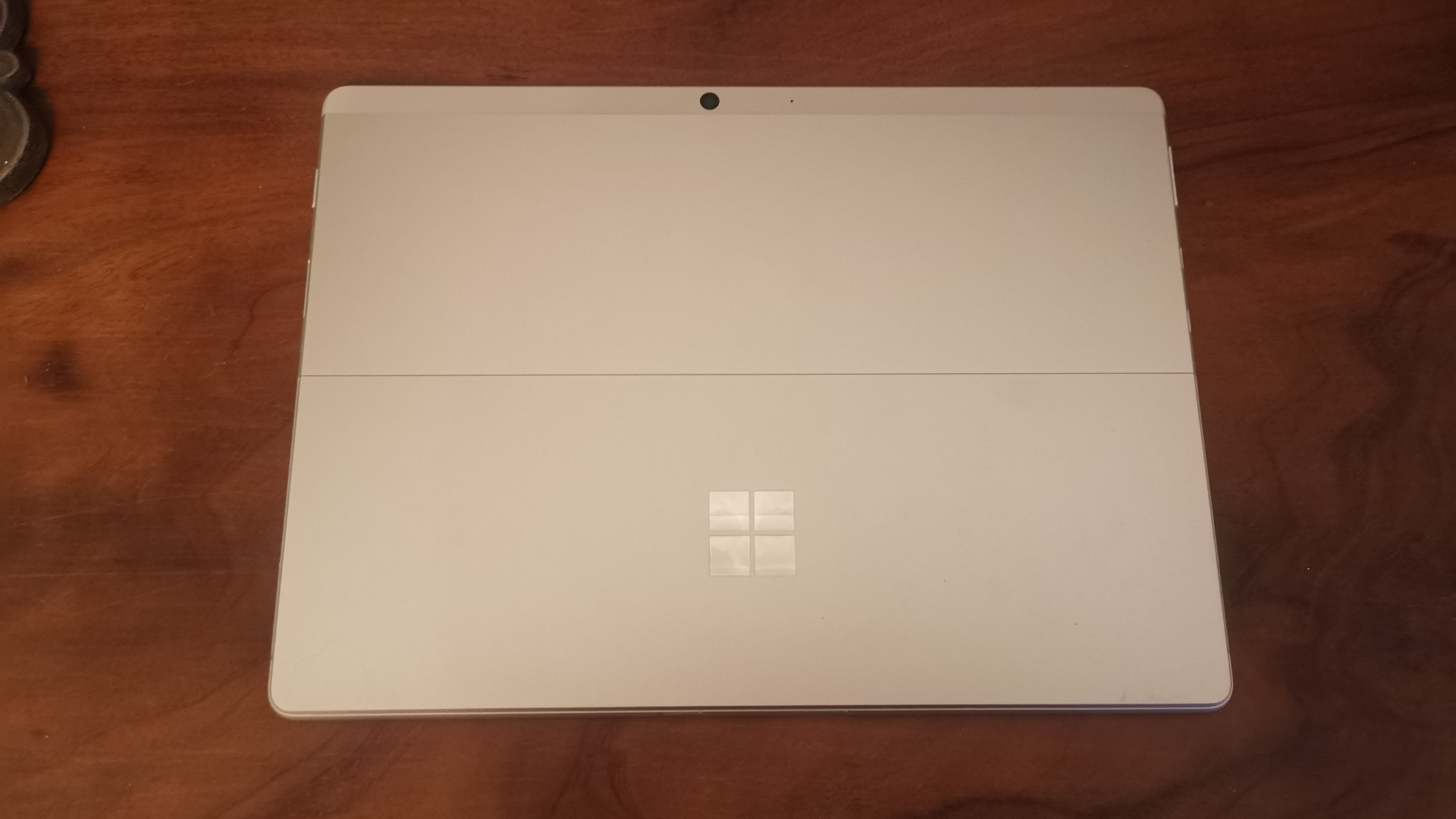
You can pick up the Surface Pro X for around $799/£919, though this will only net you 8GB of RAM and 128GB SSD. If you're just wanting to use it for light work such as emails, surfing the web and streaming content then that'll serve you just fine, though you'll need some additional beef to run the small number of creative applications available.
We would suggest opting for the top spec model, which has 16GB of RAM and 512GB of SSD storage for $1,499.99/£1,509. The price is far from cheap, but this is in line with pricing for similar hardware from the current generation of iPad Pro tablets powered by Apple’s own Silicon, the M1 chip.
The kicker of course is that many of the benefits of the Surface Pro X are not included in that already heft price tag, as this is the asking price for the tablet only. Additions like the Surface Pro Signature Keyboard will cost you $180/£160, and the Surface Slim Pen 2 costs $130/£120, though you can often find the two accessories bundled together for around $269/£259. This means the most that the minimum you’d have to spend to get the ‘full Surface Pro X experience’ is £1,178 unless you can pick some things up in an annual sale or clearance.
Given how restrictive ARM currently is for creative professionals, that's a lot of money to spend on something that will likely be relegated to being a secondary device, especially when the aforementioned iPad Pro caters itself so well towards creatives needing a portable solution. For the price of the Surface Pro X tablet alone, you could afford a budget-friendly laptop that will be much better equipped to handle demanding software, such as the Asus Vivobook or Zenbook Flip, the latter of which can be used with a stylus as a 2-in-1 device.
Surface Pro X: display
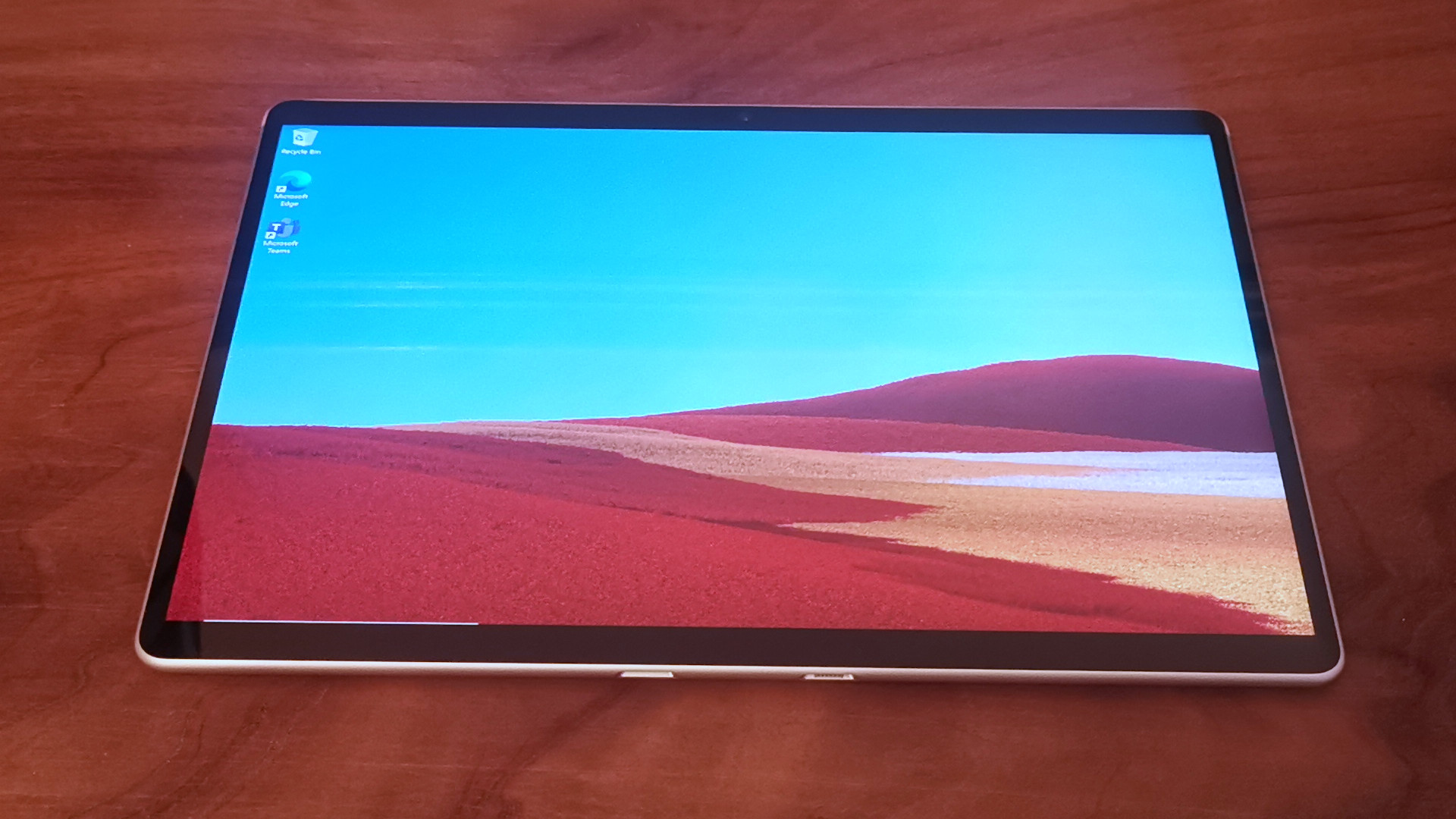
The 13-inch display has a 2880x1920 resolution and a 3:2 aspect ratio that manages to look a little fresher than other Surface devices on the market thanks to slimming down the previously chunky bezels seen on the Surface Pro 7. It still lacks the modern styling we see in other tablet devices, especially as those bezels, while slimmer, are still notable thicker than competitor products like the iPad Pro range, but it no longer looks like an outdated device thanks to the screen design.
Daily design news, reviews, how-tos and more, as picked by the editors.
You’re getting 267 pixel-per-inch (PPI), which actually works out to be the same as the Surface Pro 7 due to the differences in display size vs resolution, so while the actual screen is bigger, you’re not getting a clearer image. You’re also getting around 96% sRGB coverage and 450 nits of brightness, which is impressive but overshadowed by other, similarly priced rivals on the market like the 2020 iPad Pro 12.9-inch which rocks a 120% sRGB colour gamut and 550 nits.
If you’re considering buying the Surface Slim Pen 2 then you’ll get 4,096 levels of pressure sensitivity/ For context, that’s the same as you’d get using many budget-friendly display tablets like the Wacom One and so works suitably well for any illustration or graphic design work on Photoshop, but that’s still around half as much as you’d get in the more powerful products in the Wacom range.
Surface Pro X: power and performance
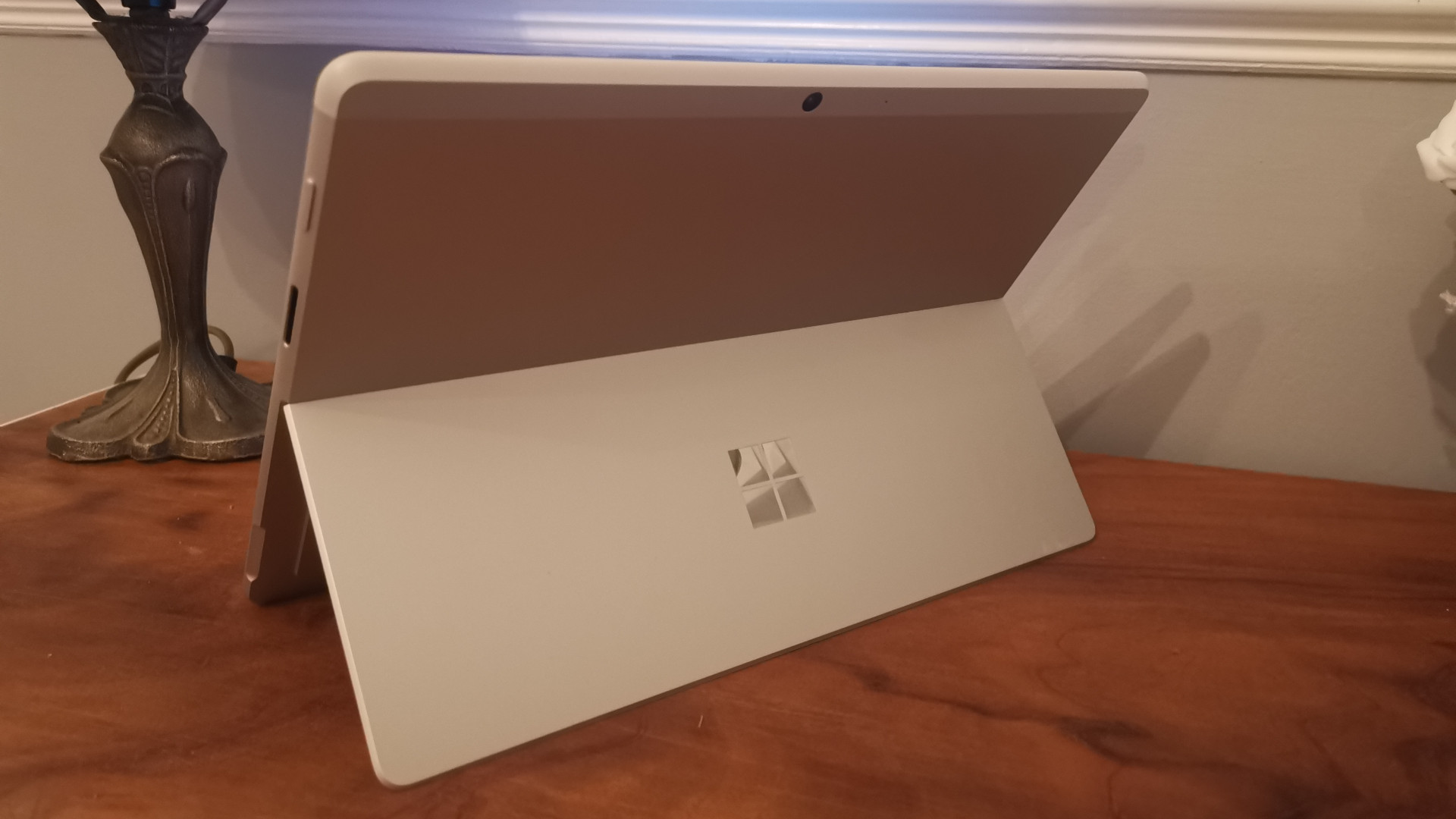
The Surface Pro X performance expectations will be varied depending on what type of consumer you are. Using Office suite applications and Microsoft's own Edge browser was a treat, and everything ran smoothly. You’ll notice that other browsers are noticeably slower though, which became frustrating after a few hours of using Google Chrome.
Considering how many people use Chrome over Edge, that might mean you have to convert to using Microsoft’s own browser if you’re considering buying the Pro X to avoid the longer loading times. It's worth noting that the SQ2 chip is only marginally better than the SQ1, so don't look at the fresher-faced processor as an M1 rival or even a significant step up from its predecessor.
As a writer, I can tell you from previous experience of typing on the Surface Pro X keyboard that using the device as a daily driver for tasks like writing emails and general web browsing is a joy, better even than the experience of using some laptop keyboards. If all you need from this kind of device is general everyday usage, then chances are you might fall in love with the benefits that ARM already has.
Unfortunately, the same cannot be said if you were hoping to use it as a dedicated portable creative workstation. This is for several reasons, the biggest being that while the ARM system is impressively fast for natively supported software and functions, it isn’t especially powerful. This combined with the lack of native support for most creative applications results in a disappointing and expensive piece of kit for anyone hoping to replace a bulky laptop with something easier to transport around.
If you reign in your expectations a little though, you can appreciate that the Surface Pro X is a fantastic secondary device for creative professionals who have access to other hardware. The lack of any graphical capabilities on the Surface Pro X means that even if it could run popular applications like DaVinci Resolve or Blender natively, you won’t enjoy the sluggish experience.
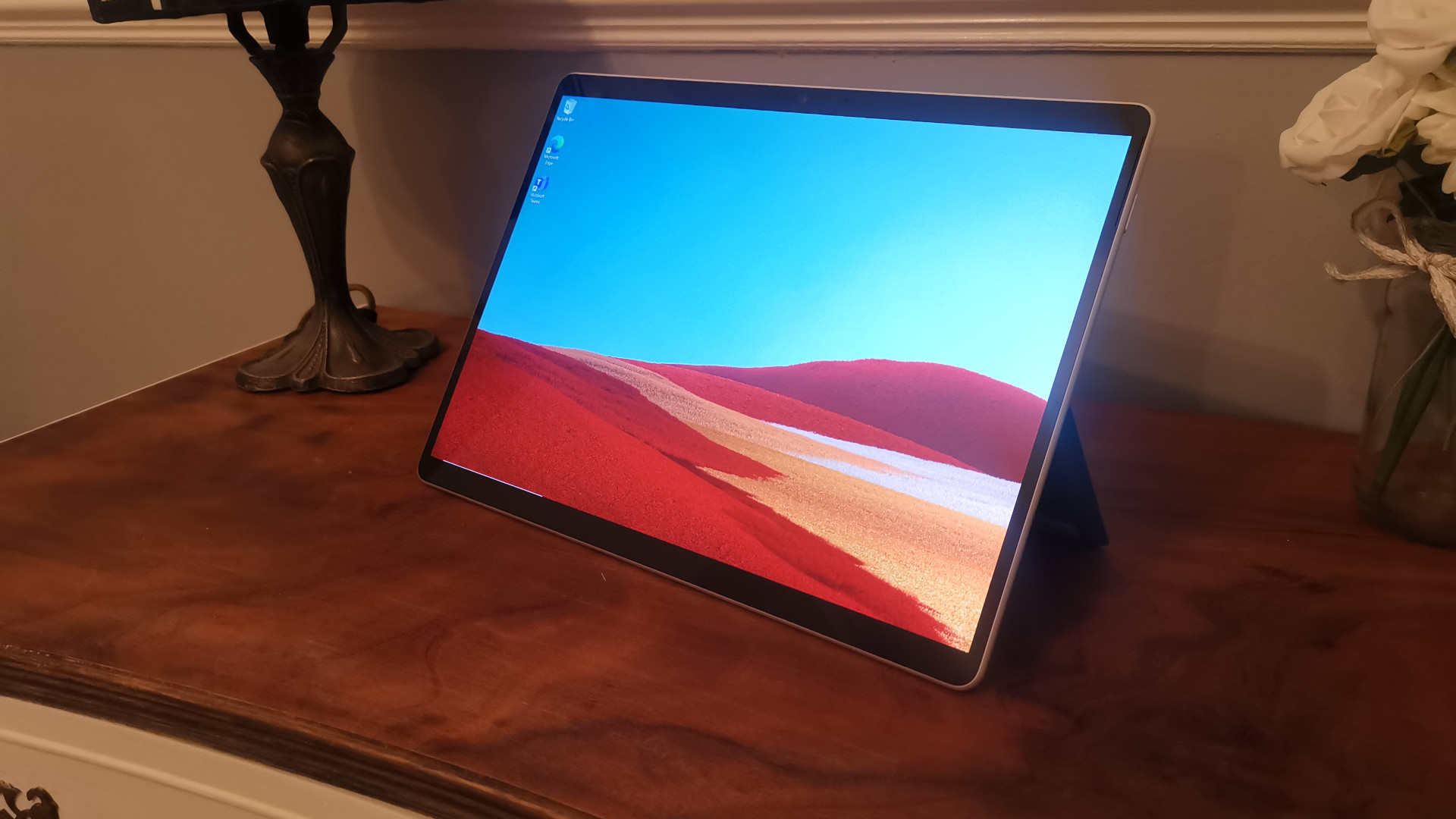
You can get some of these unsupported programs running in Windows for ARM through various emulation programs, but again, the results will leave a rather sour taste in your mouth, so it’s best only done as a last resort. If you have the cash to spend on a Surface Pro X, but your main priority for a device is to run graphically demanding applications then you can get much better results with a laptop that has a dedicated GPU within the same price range.
Not only that, but the Surface Pro 7+ has Intel Iris Xe graphics built into its chip, which gives it far greater performance in the few creative applications that the Surface Pro X can actually run, which also makes it a better choice for creative professionals and hobbyists.
Battery life was touted as a prominent benefit using an ARM-based device, and Microsoft promises on its website that the Surface Pro X can run for up to 15 hours. This is sadly far from the case in our own tests, with the tablet running a continuing looped video for 9 hours and 10 minutes while managing around 8 hours and 12 minutes while running Adobe Photoshop. You can expect an average of around 7-8 hours depending on what you’re using the device for, which is pretty middling.
Having the option to use LTE is incredibly freeing, especially if you frequent places that don’t offer a WiFi connection, so you can upload your work or stream some content to the device using cellular data. You’re also getting WiFi 5 which is suitably speedy, though now slightly outdated by WiFi 6 which is making more appearances in recent laptop and tablet releases.
Surface Pro X: design
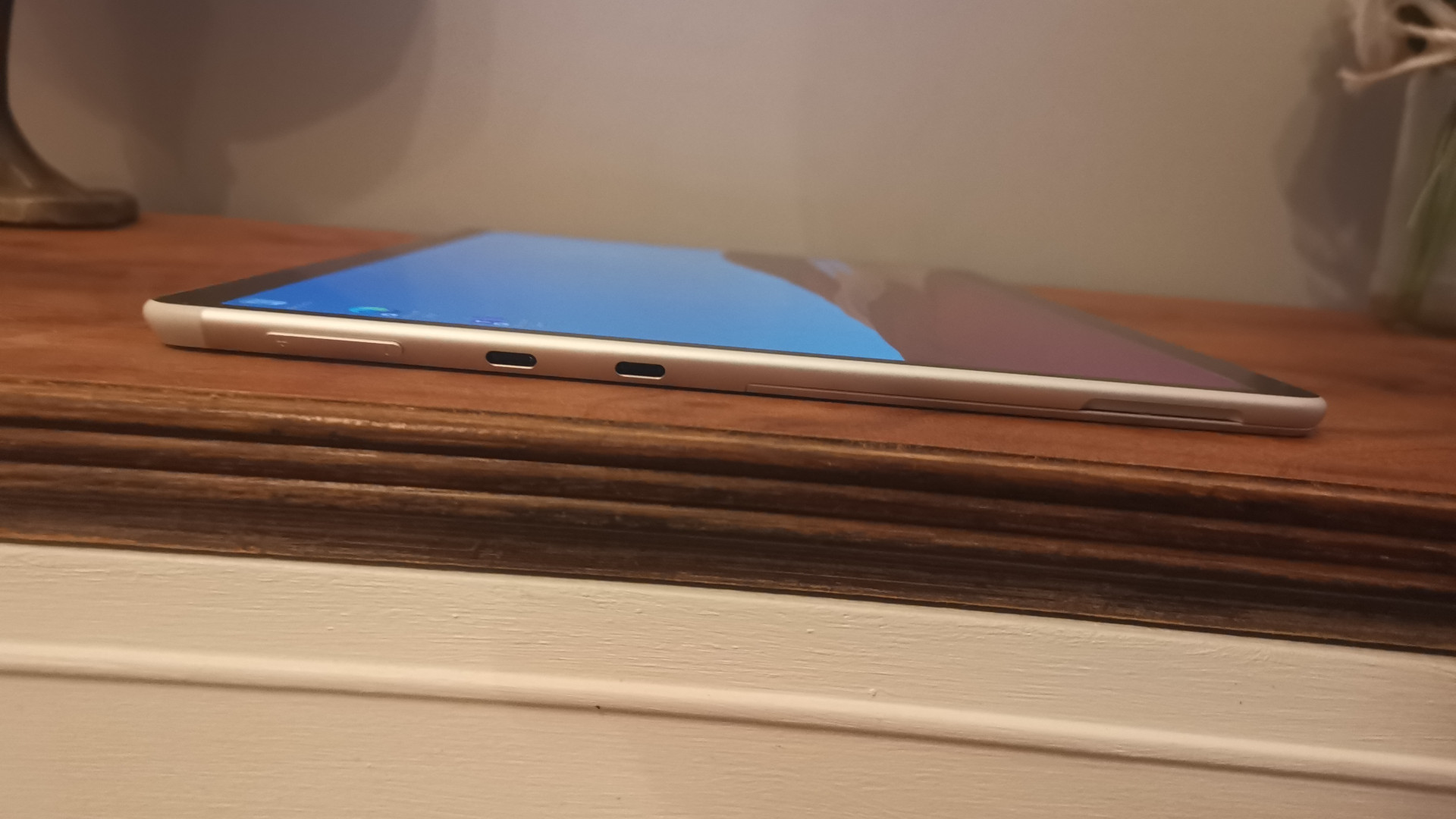
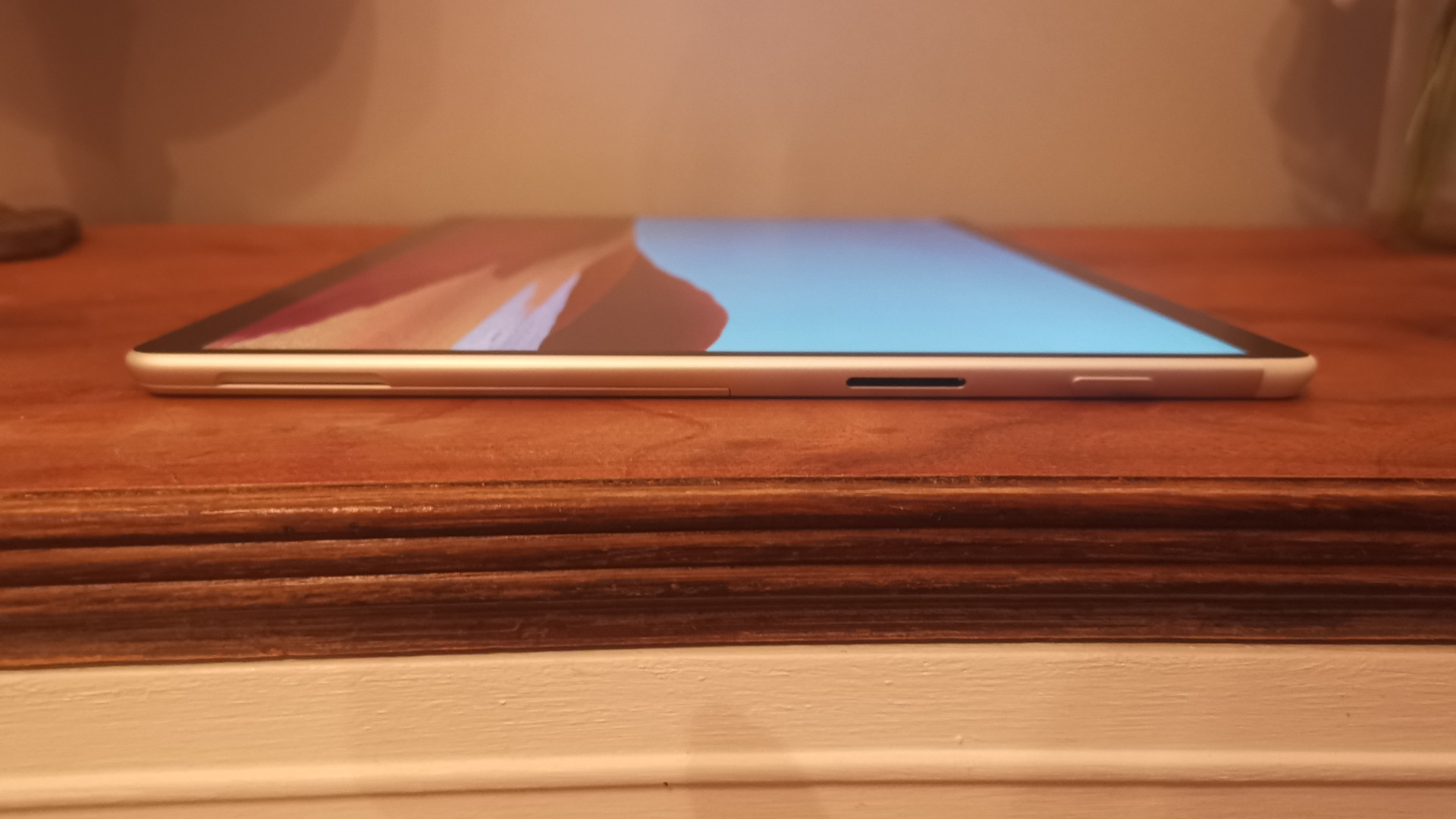
The design is pretty standard stuff for a Surface Pro tablet. You’re getting two USB-C ports, either of which can be used to charge the device if you don’t have the magnetic Surface Connect charger to hand, but neither of the USB-C ports are Thunderbolt 4, so you’ll be dependant on buying even more equipment locked into the Microsoft ecosystem for docking the device to additional displays.
If you did need an additional display then the Surface Dock 2 can be purchased for $259.99/£259.99 to connect up to two 4K 60 Hz monitors, as well as other accessories and dongles like the Travel Hub or HDMI adapter. You can buy USB-C peripherals like mice and headsets, and sadly the USB-A and the headphone jack have also been removed, so you're now more dependant on wireless or USB-C accessories than ever. Luckily, there are plenty of BlueTooth options available that would help keep your workspace free of cables and free up the few ports you have available.
The cameras on the Surface Pro X are some of the best we’ve ever tried across both Tablet and Laptop devices, with a 5.0MP front-facing camera that supports 1080p full HD video for video calls or virtual meetings, and a 10.0MP rear-facing autofocus camera with both 1080p HD and 4k video. You won’t want to be filming anything studio-quality on it and it’s not likely to contend with the photographic quality of most modern flagship smartphones, but it’s perfectly suitable for snapping pictures while out and about.
If you need to prop the Surface Pro X up to take a call then there's a built-in stand at the back that flips out. Despite being extremely thin, it’s suitably stiff and sturdy, though it can be a little tricky to separate from the rear of the tablet, even despite it having a bezel edge to slip your fingernails under. You’ll find the slot that contains a swappable SSD under the kickstand, allowing you to upgrade the storage at a later date should you choose to do so, as well as a compartment for a nanoSIM.
Surface Pro X: should you buy it?
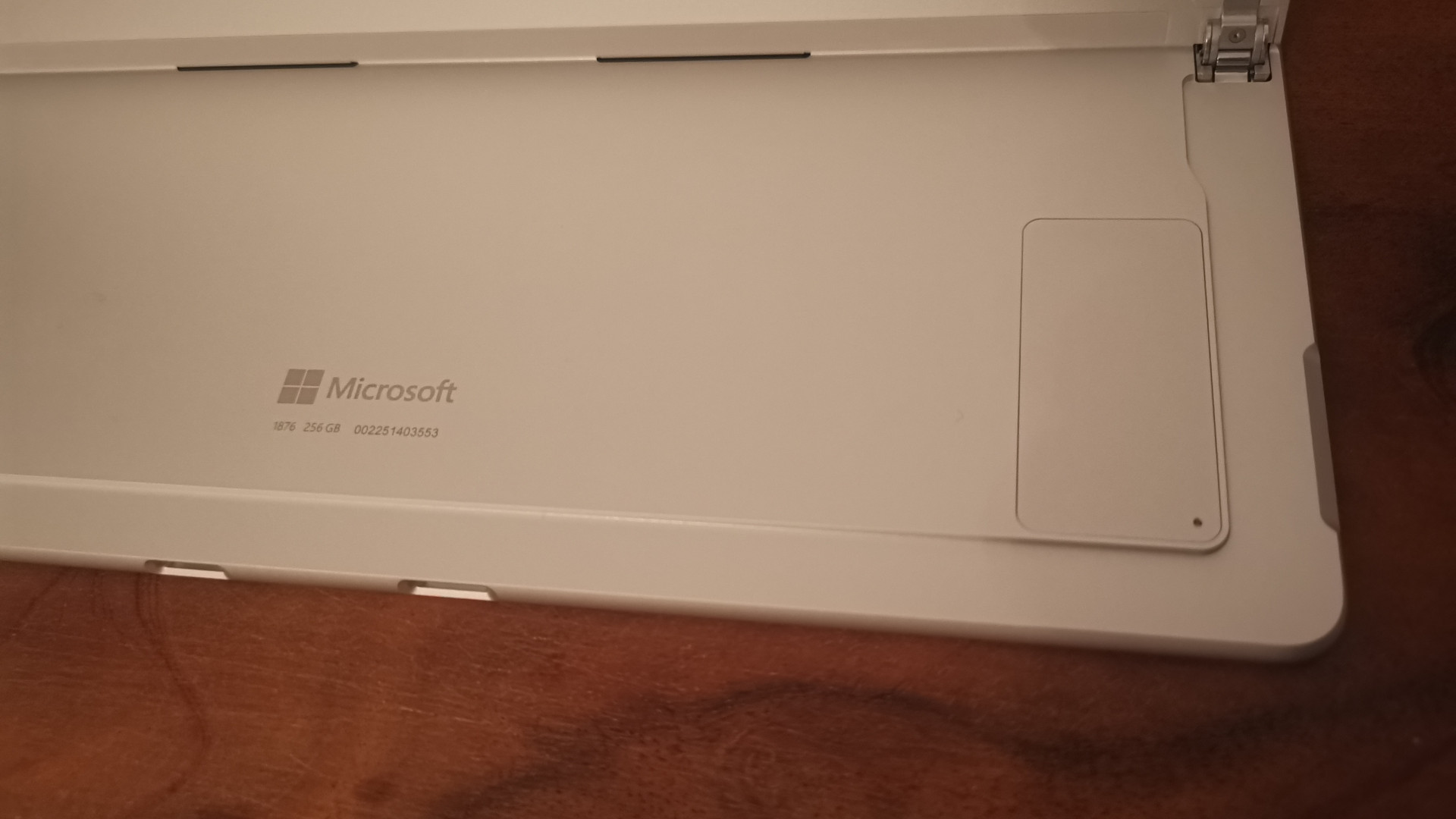
After some time playing with the Surface Pro X, it's safe to say that things still don’t feel especially polished for Windows on ARM, but that doesn’t mean you should write off the device entirely.
If you consider this as an optional tool to help support existing hardware in your kit then it’s a fantastic addition to a workspace. The LTE means you can really work from anywhere where there's a cellular signal, and it’s easier to throw into a bag than a bulky laptop for some quick sketches or image editing on the go, especially if you also invest in the optional keyboard and pen.
It isn’t however, a replacement for a dedicated device, and its usefulness disappears if you don’t mostly use one of the few natively supported creative apps available on the platform. Even the younger Apple M1 Silicone system has more native support, which should be considered a blow to Microsoft loyalists.
If you want a Surface Pro device to support your creative work, instead opt for the Surface Pro 8 or Surface Pro 7+, both of which are still powered by Intel processors with much greater graphical capabilities and native app support for things like video editing or 3D sculpting at a stretch.
Otherwise, consider the Surface Pro X to be ‘early adopter’ tech. ARM-powered devices are making more of an appearance, and support is constantly being developed to try and raise it to the same standards as a full laptop or desktop system, but until that happens, you’re essentially paying a lot of cash for something that can run web browsers and a handful of Adobe applications well.
Related articles:
- The best Surface Pro 8 prices: all the best deals right now
- Microsoft Surface Pro 7 review
- Get the best external hard drives here
out of 10
The Microsoft Surface Pro X is a lightweight device for everyday browsing and general office work, but the lack of native support for creative applications for Windows on ARM makes it a very hard sell for people working in a creative industry. It makes for a sufficient secondary tool if you already have dedicated hardware to run the software you need, but even then it's outshined by older, Intel-powered Surface Pro devices.

Jess is news writer at The Verge. She was previously TechRadar's computing writer, covering hardware, PC gaming and peripherals, though she can be found freelancing for creative tech like 3D printers and graphics drawing tablets. She also likes to dabble in digital art and can often be found playing games of both the PC and Tabletop variety, occasionally streaming on Twitch to the disappointment of everyone.
